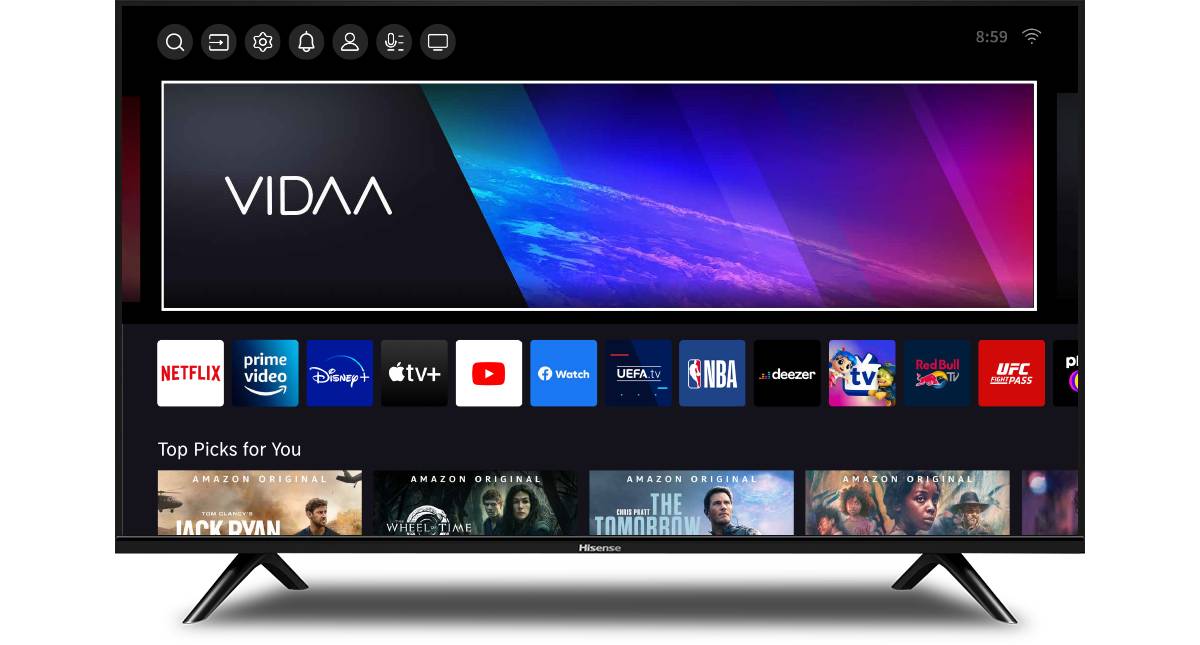While 2023 may become best known as the year Twitter imploded, it has also seen the beginnings of an AI revolution in the advertising industry. With AI adoption set to accelerate across the media landscape, 2024 will likely see advertisers start to unlock its creative potential. Meanwhile advertising has made its way onto every major streaming service, putting programmatic TV buying firmly on the agenda for the year ahead.
VideoWeek asked 11 ad tech executives what to expect from video, TV and advertising in 2024.
 Nicola Lewis, Global Chief Solutions Officer, GroupM Nexus
Nicola Lewis, Global Chief Solutions Officer, GroupM Nexus
2024 will see the industry leveraging the powerful synergies that occur when we combine 1) addressable creative to drive outsized effectiveness for brands, 2) AI for content creation, and 3) commerce solutions for TV.
We expect more brands to start looking at ways of enhancing their ad messaging based on audience to drive performance with intelligent use of creative formats. AI will lower the barriers to entry through optimised production costs for brands looking to get on TV. It allows rapid production of multiple creative iterations at scale, A/B testing and continual live creative optimisation.
Meanwhile TV as a media channel has historically been a big sales/profit driver for advertisers. Bringing new and expanded commerce data sets into addressable TV is another way that we can drive performance for lower-funnel objectives. We expect to see more commerce data coming into addressable TV, not just to identify the most valuable audience segments but also near real-time signals based on stock/sales/footfall to optimise media to business goals and priorities.
 Rajeev Goel, Co-Founder and CEO, PubMatic
Rajeev Goel, Co-Founder and CEO, PubMatic
In 2023, we saw programmatic disruption begin to take hold in CTV. This change was driven by an influx of supply as more streamers introduced ad-supported tiers, as well as buyers seeking greater efficiencies and control across their digital advertising supply chains.
Additionally, as buyers become more comfortable buying CTV inventory programmatically, we expect to see an acceleration of omnichannel buying that includes this valuable format. We think we are at the precipice of a ‘total video’ approach that enables buyers and publishers to fully leverage the data, targeting capabilities and efficiency that programmatic automation unlocks.
All of this comes at a time when ad buyers are realising the benefits of premium video programming relative to social media or walled gardens, with the latter having many content quality challenges. As a result, the Open Internet is set to continue to gain share of advertiser budgets.
 Andrew Casale, President and CEO, Index Exchange
Andrew Casale, President and CEO, Index Exchange
2024 will see very different trends depending on the market. I expect to see continued streaming adoption across Europe, as the plethora of AVOD services helps accelerate the shift to streaming that currently lags behind the US market. As for the US, I expect us to see programmatic put to the full test in what will be a massive programmatic election, with both consumer streaming adoption at critical mass, and the increased availability and ease of access of programmatic platforms enabling their widespread adoption by election campaigns, compared to the previous few election cycles.
 Amy Williams, CEO and Founder, Good-Loop
Amy Williams, CEO and Founder, Good-Loop
Next year will put doing good back on the advertising agenda. Our recent survey found that 97 percent of industry folk believe advertising could be a force for good. At the same time, only 50 percent believed their campaigns had a positive impact on the world. Next year, I expect to see this change. As brands look for new ways to engage with consumers, brand values come increasingly under scrutiny. People want brands to openly show their commitment to topics such as sustainability and diversity and stand by their values. After a year of greenwashing and hushing and diversity campaigns that didn’t resonate, consumers are expecting brands to start walking the walk, not just talking the talk.
Furthermore, as brands look to engage with consumers in the increasingly competitive landscape, they need more innovative ways to connect with new audiences. We can expect interactivity to increase across all media, putting consumers in the driving seat. Brands no longer create experiences for them but also with them, turning people from passive audiences into active participants.
 Michael Hudes, CEO, LG Ad Solutions
Michael Hudes, CEO, LG Ad Solutions
AI will be transformative for CTV marketers in 2024 and beyond, particularly in targeting and creative content creation. Advanced AI segments will enhance targeting effectiveness and will improve outcomes, speeding up media plan creation and scaling. This marks the start of an era where AI minimises audience wastage and maximises ad investment returns.
Advertising creatives will also benefit from AI. We’re already using AI for clients in premium native CTV placements. By 2024, creative testing will be more streamlined, thanks to rapid generation and testing of numerous ad creatives. This rapid production empowers fast evaluation of campaign creative effectiveness; marketers will more easily choose the most effective options.
Outside of AI, we’re working towards a future where TV screen boundaries blur into more engaging, non-traditional environments. As screens appear in places like auto passenger screens, delivering free ad-supported streaming TV (FAST) channel content will provide TV-like experiences and advertising opportunities.
 Karen Nelson-Field, Founder and CEO, Amplified Intelligence
Karen Nelson-Field, Founder and CEO, Amplified Intelligence
Due to the stream of economic curveballs in 2023, advertisers were quick to embrace attention-based measurement that goes beyond tracking basic viewable delivery to assess the real impact digital video campaigns make. And, most crucially, how they can be optimised.
While the immersive nature of digital video gives it strong engagement-driving capacity, advertisers in 2024 will be looking for clearer validation that ad interaction is positively bolstering key business objectives, especially as the pace of video budget growth slows. Throughout next year, we’ll see greater evolution of media planning, with metrics – such as attention adjusted reach curves (AARCs) – layered over existing processes to enable more precise allocation of spend. By defining the exact level of attention each ad, format, and platform fuels, planners can better tailor campaign spend and placements towards the most effective formats and channels, ensuring complete media efficiency.
 Michael Barrett, President and CEO, Magnite
Michael Barrett, President and CEO, Magnite
For those of us in this industry, it feels like déjà vu to proclaim this the year of programmatic streaming. But we have to remember that we’re still in the early days of leveraging programmatic for streaming TV media buys. Many of the largest video media owners, from broadcasters to formerly SVOD-only publishers, are only starting to incorporate ad-supported streaming into their business models. Add onto that the shift from direct selling to programmatic and you’re introducing more complexity but also a lot of potential efficiencies in the long term. We’re already seeing new flavours of programmatic technology and execution being developed to better fit the way premium video is bought and sold. I believe we’ll see more publishers and buyers lean into programmatic execution for streaming in 2024 and eventually, it will be the way a majority of TV is transacted.
 Jenn Chen, President and CRO, Connatix
Jenn Chen, President and CRO, Connatix
2024 will be a pivotal year to test, refine and future-proof strategies after a tough year economically in 2023. Advertisers and publishers will also increase investment in sophisticated AI and ML technologies to enhance cookieless targeting solutions and future-proof strategies. We’ll see a greater focus on contextual, combining that data with first-party data and universal identifiers for more effective monetisation. There will be a race to interoperability, and we hope this brings the industry together vs. further fragmenting it. And as cross-channel video strategies become more important, we’ll see advertisers increase their requests for contextual show-level data in CTV, and we believe more content providers will do so – even if it’s with strict spend commitments.
 Ashwin Navin, CEO and Co-Founder, Samba TV
Ashwin Navin, CEO and Co-Founder, Samba TV
2024 is set to be a transformative year for TV. TV data at scale presents the opportunity to reinvent measurement. Cross-platform measurement will reach a higher level of sophistication, with the industry accelerating towards outcome-based measurement and real-time optimisation of reach. These developments will facilitate a more impactful way to reach audiences across an increasingly dynamic device landscape, including CTV.
And one can’t underestimate the potential of real-time data training AI models to unlock automation for insights and optimisation. Brands will benefit from these new technologies and use cases that inform smarter decision-making. This, in turn, will result in a more streamlined and effective way to deliver impactful and personalised brand experiences for TV viewers.
 Elizabeth Herbst-Brady, CRO, Yahoo
Elizabeth Herbst-Brady, CRO, Yahoo
In 2024, creative will play a bigger role in programmatic success. This is especially true as the industry grapples with challenges in identity resolution. While we must continue to solidify foundations around identity and quality inventory, creative will drive performance, engagement, and brand awareness. Creative will be top of mind for all advertisers, but particularly so for CTV advertisers with the convergence of generative AI, the necessity of managing the cost of creative development, and addressability of CTV. Advertisers will be emboldened by AI to develop an array of creative variations for their campaigns, and to deliver personalisation like never before. This allows them to engage audiences across geographical areas, languages, and viewing environments – without incurring sky-high production costs. But it also reduces ad fatigue, by varying the creative viewers see in their own specific households.
Ofer Druker, CEO, Nexxen
I predict 2024 will be the year that advertisers and brands reach a real balance between their linear and connected TV (CTV) budgets, marking a true convergence. To prepare for this shift, it’s important that advertisers and agencies use cross-platform planning technology that will allow them to run efficiently and use their budget to reach their audiences and KPIs. Investing in unique television data – such as automatic content recognition (ACR) data, for instance – will also help paint a more granular, detailed picture of how viewers are consuming today’s content, ensuring the transition from linear to CTV is as smooth as possible for those across the buy- and sell-sides of our ecosystem.





